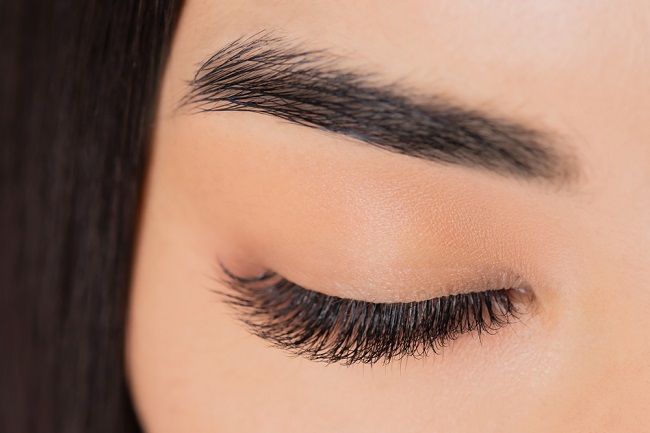The winged shoulder blade is a rare anatomical condition. Even so, winged shoulder blades can interfere with daily activities and reduce self-confidence. Recognize the causes of winged shoulder blades and what can be done to treat this condition.
As the name implies, the shoulder blade will protrude to form like a wing. This condition can interfere with the alignment of arm movements. As a result, movement becomes very limited, for example when lifting things, brushing teeth, combing hair or changing clothes.

Causes of winged shoulder blade
Winged shoulder blades can be caused by a variety of things, from trauma to muscle injuries to unknown causes. This causes nerve injury and paralysis of the muscles that move the shoulder blades, such as the centroid anterior, trapezius or rhomboid muscles. As a result, these muscles are unable to pull the shoulder blades together and make them protrude like wings.
The occurrence of the condition of the winged shoulder blade can also be influenced by the side effects of certain therapies or medical procedures. For example, surgery on the neck, which then injures the nerves of the muscles that support the shoulder blades, so that the muscles are paralyzed and cause the shoulder blades to appear winged.
Signs of the occurrence of winged shoulder blades are different for each person, depending on the condition and the muscles that are problematic. But in general, the symptoms of the winged shoulder blade are difficulty in lifting the arm above shoulder height, pain in the neck, shoulders, back and shoulders seem to drop.
Overcome shoulder blade problems this way
To find out which part of the muscle is experiencing the problem, the doctor will usually perform an electromyography examination to test all the muscles that move the shoulder blades. After knowing the problematic muscle, then several ways to overcome the problem of the winged shoulder blade will be carried out, including:
- Conservative therapyConservative therapy is one way to treat the winged shoulder blade. To treat paralysis of the centroid anterior muscle, conservative therapy can be performed for 6-24 months. If there is paralysis of the trapezius muscle, an initial exploration of the spinal accessory nerves will be performed. If this fails, the doctor will decompress the dorsal nerve.
- Shoulder muscle trainingSo that the muscles around the shoulder blades do not contract, exercises to maintain the range of motion are very important. However, special measures must also be taken so as not to stretch the paralyzed muscles. After the muscle nerves have improved, strength training will be carried out gradually to restore function to the muscles in the shoulder.
- OperationThe surgical procedure will be the last resort if some of the above methods don't work. This procedure is done to treat disorders caused by damage to the joints located in the shoulder. In this procedure, the doctor will treat the problematic tissue and return the shoulder blades to their normal position.
The condition of the winged shoulder blade can interfere with activities, so the sufferer feels frustrated or depressed. You can overcome the winged shoulder blade in several ways above, through consulting a doctor.
Overcome shoulder blade problems this way
To find out which part of the muscle is having problems, the doctor will usually do an electromyography test to test all the muscles that move the shoulder blades. Only then will be done several ways to overcome the problem of the winged shoulder blade.
The first step to treat winged shoulder blades can be started with conservative therapy that can provide a spontaneous recovery time. For paralysis of the centroid anterior, conservative therapy can be performed for at least 24 months or at least 6 months. If there is paralysis of the trapezius muscle, an initial exploration of the spinal accessory nerves will be performed. And if conservative therapy fails, dorsal nerve decompression will be performed.
So that the muscles around the shoulder blades do not contract, exercises to maintain the range of motion are very important. However, special measures must also be taken so as not to stretch the paralyzed muscles. After the muscle innervation improves, strength training will be carried out gradually.
This exercise can be done to strengthen the shoulder and shoulder muscles
In order to strengthen the shoulder and shoulder blade muscles, here are some ways you can do it.
- Shoulder squeeze
This movement can be done to stretch the muscles around the shoulder. You can do this in a standing or sitting position. However, make sure your back is straight. After that, pull your shoulder blades towards the center of your back, so that your chest looks leaning forward. Then return to the original position. Repeat this movement several times.
- Side rotation to the right and to the left
This movement is done with the body sitting upright. Make sure your feet are flat on the floor. Then place your left palm on your right shoulder and vice versa, until you get a crossed position in front of your chest. Make sure to raise your arms to chest level. Rotate your upper body slightly left and right, then hold for about 10 seconds. Do the same thing alternately on the other side five times.
- Arch your back
First, place your hands behind your head. Then arch your back back with your head looking up at the roof. Hold for 10 seconds, then return to the starting position. Repeat this movement five times.
- Curve the right and left sides of the body
Still with your feet flat on the floor and placing your hands behind your head. Bend your body to the right and left. On each side, do five times and hold for about 10 seconds.
You can practice the above method every day to strengthen the shoulder and shoulder blade muscles. Even so, try to consult about exercises for the winged shoulder blade to your doctor. Is it safe if you do it or not.









